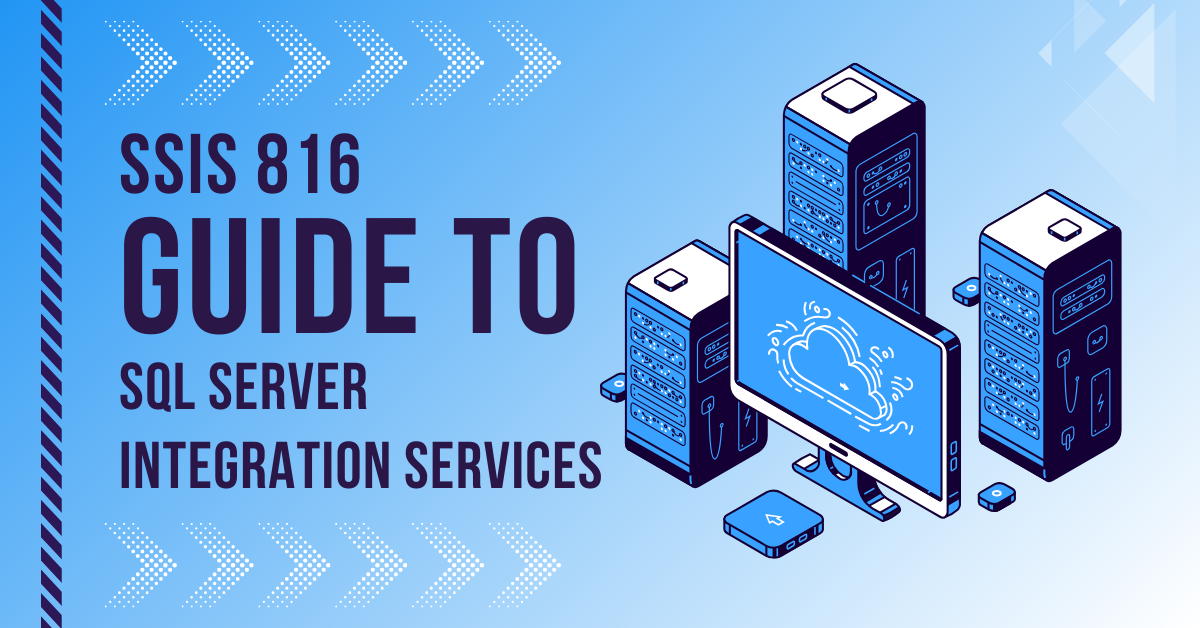Technology
Revolution of XVIF Technology: Unleashing Innovation and Efficiency Across Multiple Sectors

In the ever-evolving landscape of modern technology, XVIF emerges as a powerful force driving innovation and efficiency across various sectors. This groundbreaking technology has redefined data encryption, image processing, and network security, paving the way for a new era of digital advancements. In this in-depth article, we will delve into the intricacies of XVIF, exploring its applications, capabilities, and the transformative impact it has had on industries worldwide.
Understanding XVIF Technology
XVIF, short for eXtensible Virtual Information Fusion, represents a cutting-edge approach to data processing and analysis. At its core, XVIF utilizes advanced algorithms and techniques to integrate, analyze, and interpret vast amounts of data from disparate sources. This fusion of information enables organizations to extract valuable insights, enhance decision-making processes, and optimize various operations.
Applications of XVIF Across Industries
· Data Encryption and Security
One of the primary applications of XVIF technology is in data encryption and security. XVIF employs robust encryption algorithms to safeguard sensitive information, ensuring confidentiality and integrity. This is particularly crucial in sectors such as finance, healthcare, and government, where data privacy and security are paramount. XVIF’s encryption capabilities not only protect data at rest but also during transmission, mitigating the risk of cyber threats and unauthorized access.
· Image Processing and Analysis
XVIF has also made significant strides in the field of image processing and analysis. By leveraging advanced computer vision algorithms, XVIF can analyze and interpret visual data with remarkable accuracy. This has widespread applications in industries like manufacturing, autonomous vehicles, and healthcare imaging. XVIF-powered systems can detect anomalies, classify objects, and generate actionable insights from images, enhancing efficiency and reducing manual intervention.
· Network Security and Threat Detection
In the realm of network security, XVIF plays a crucial role in threat detection and mitigation. Its ability to analyze vast volumes of network data in real-time enables organizations to identify suspicious activities, intrusions, and anomalies promptly. XVIF-powered security systems can detect patterns indicative of cyberattacks, allowing for proactive defense measures. This proactive approach is essential in safeguarding critical infrastructure, financial systems, and sensitive data repositories from evolving threats.
The Advantages of XVIF Technology
· Enhanced Data Fusion and Analysis
One of the key advantages of XVIF technology is its capability to fuse heterogeneous data sources seamlessly. By integrating structured and unstructured data streams, XVIF facilitates comprehensive analysis and pattern recognition. This holistic view of data enables organizations to uncover correlations, trends, and hidden insights that would be challenging to discern using traditional methods.
· Real-time Decision Support
XVIF’s ability to process data in real-time provides organizations with actionable insights and decision support capabilities. Whether it’s optimizing supply chain operations, predicting market trends, or detecting anomalies in network traffic, XVIF empowers stakeholders to make informed decisions swiftly. This agility is particularly valuable in dynamic and fast-paced environments where timely actions can drive competitive advantage.
· Scalability and Adaptability
Another advantage of XVIF technology is its scalability and adaptability to diverse use cases. Whether deployed on-premises or in cloud environments, XVIF’s can scale seamlessly to handle large volumes of data and complex analytical tasks. Moreover, its extensible architecture allows for customization and integration with existing systems, maximizing interoperability and efficiency.
Challenges and Considerations
While XVIF technology offers myriad benefits, its adoption and implementation come with certain challenges and considerations.
· Data Privacy and Compliance
As XVIF processes and analyzes sensitive data, ensuring compliance with data privacy regulations and standards is paramount. Organizations must implement robust security measures, data anonymization techniques, and access controls to protect user privacy and comply with legal requirements.
Also Read: Revolutionizing Technology: Exploring the Impact of bfg098
· Complexity of Integration
Integrating XVIF into existing IT infrastructure and workflows can be complex, requiring expertise in data architecture, software development, and system integration. Organizations need to assess their technological readiness, allocate resources effectively, and engage with experienced partners or vendors to streamline the integration process.
· Performance Optimization
Optimizing the performance of XVIF’s systems, especially in large-scale deployments, requires continuous monitoring, tuning, and optimization. This includes optimizing algorithms, hardware infrastructure, and data processing pipelines to ensure efficient resource utilization and optimal response times.
Future Outlook and Innovations
Looking ahead, the future of XVIF technology holds exciting prospects and innovations. Advancements in machine learning, artificial intelligence, and edge computing will further enhance XVIF’s capabilities, enabling more sophisticated data fusion, predictive analytics, and autonomous decision-making. Moreover, the convergence of XVIF’s with emerging technologies such as blockchain, IoT (Internet of Things), and 5G networks will unlock new opportunities for cross-industry applications and digital transformation.
Case Studies and Success Stories
To illustrate the tangible impact of XVIF technology, we can explore real-world case studies and success stories across different sectors. For instance, in the healthcare industry, XVIF-powered systems have revolutionized medical imaging diagnostics, enabling faster and more accurate diagnosis of diseases. Similarly, in the finance sector, XVI’F algorithms have been instrumental in fraud detection and risk management, saving organizations millions in potential losses.
Conclusion
In conclusion, XVIF technology stands at the forefront of digital innovation, offering unparalleled capabilities in data fusion, analysis, and decision support. Its applications span across diverse industries, driving efficiency, security, and insights-driven decision-making. While challenges exist in its adoption and implementation, the transformative potential of XVIF’s is undeniable. As organizations continue to embrace digital transformation, XVIF will play a pivotal role in shaping the future of technology and unlocking new possibilities for innovation.
Technology
Exploring Mywape: A Comprehensive Analysis of a Digital Powerhouse

In the dynamic realm of digital tools and platforms, Mywape emerges as a versatile and powerful solution that has garnered attention across various industries. This article delves deep into the intricacies of Mywape, exploring its historical journey, standout features, SEO strategies, usage tips, and future prospects. By understanding the essence and capabilities of Mywape, one can grasp its significance in today’s fast-paced digital landscape.
Unraveling the Roots: A Historical Perspective of Mywape
To truly appreciate the impact and evolution of Mywape, it’s essential to trace back its origins. The historical journey of Mywape unveils pivotal milestones, significant updates, and the driving force behind its inception. Understanding the foundational aspects of Mywape provides valuable context to its current standing and future potential.
Features That Define Mywape: Unraveling the Versatility
Mywape is not just another tool in the digital arsenal; it’s a multifaceted platform brimming with features that cater to diverse needs. From basic functionalities to advanced tools, Mywape offers a comprehensive suite that empowers users to streamline tasks, enhance productivity, and achieve tangible results. Exploring the standout features of Mywape sheds light on its versatility and utility across various domains.
Navigating Mywape: User-Friendly Design and Interface
Usability plays a crucial role in the adoption and success of any digital platform, and Mywape excels in this aspect. With an intuitive interface and user-friendly design, Mywape caters to both novices and seasoned professionals alike. A detailed exploration of its navigation, layout, and accessibility highlights the platform’s commitment to delivering a seamless user experience.
Standing Out in the Crowd: What Sets Mywape Apart
In a crowded digital landscape, Mywape distinguishes itself through unique selling propositions (USPs) and innovative offerings. A comparative analysis with similar platforms unravels the distinctive features, functionalities, and advantages that make Mywape a preferred choice among users. Understanding what sets My-wape apart reinforces its value proposition and competitive edge.
Real-World Applications: Mywape’s Impact Across Industries
My-wape transcends industry boundaries, offering value and relevance across diverse sectors. From content creation and digital marketing to project management and analytics, Mywape finds real-world applications that resonate with businesses, professionals, and individuals. Exploring these practical use cases showcases Mywape’s versatility and adaptability in addressing varied needs and challenges.
Empowering SEO Strategies: Harnessing My-wape for Online Visibility
In the digital age, search engine optimization (SEO) plays a pivotal role in enhancing online visibility and driving organic traffic. My-wape serves as a valuable resource for SEO professionals, providing essential tools and insights for keyword research, backlink analysis, competitor monitoring, and performance tracking. A deep dive into Mywape’s SEO capabilities unveils strategies and best practices for optimizing online presence and improving search rankings.
Maximizing Mywape’s: Tips and Tricks for Effective Usage
Efficiency and effectiveness go hand in hand when it comes to digital tools like Mywape. Leveraging tips, tricks, and best practices can help users unlock the full potential of My-wape, streamline workflows, and achieve desired outcomes with precision and efficiency. Practical guidance on utilizing My-wape optimally empowers users to navigate complex tasks, overcome challenges, and achieve success in their digital endeavors.
Addressing Challenges: Ensuring a Seamless User Experience
No tool or platform is without its challenges, and My-wape is no exception. Addressing common issues, troubleshooting technical glitches, and providing timely support are crucial aspects of maintaining a seamless user experience. By proactively addressing challenges, My-wape ensures that users can leverage its functionalities without hindrances, fostering trust, satisfaction, and loyalty among its user base.
Looking Ahead: The Future Prospects of Mywape’s
As technology continues to evolve and trends shift, My-wape remains committed to innovation and adaptation. Exploring Mywape’s roadmap, upcoming features, and future innovations provides a glimpse into the platform’s trajectory and potential impact. Anticipating and embracing future developments empowers users to stay ahead of the curve, capitalize on emerging opportunities, and leverage My-wape as a catalyst for growth and success.
Conclusion: Embracing the My-wape Journey
In conclusion, My-wape emerges as a digital powerhouse that encapsulates innovation, versatility, and user-centric design. Its historical journey, standout features, SEO prowess, practical applications, and future prospects paint a compelling picture of its impact and relevance in the digital landscape. By understanding, harnessing, and maximizing Mywape’s capabilities, users can embark on a transformative journey of digital empowerment, efficiency, and success.
Technology
Unlocking the Power of VPS Barato: Affordable and Efficient Hosting Solutions

In the vast landscape of web hosting solutions, Virtual Private Servers (VPS) Barato has emerged as a game-changer, offering a compelling blend of power, affordability, and flexibility. This comprehensive guide explores the intricacies of VPS Barato, delving into its advantages, considerations, and steps for optimal utilization.
Understanding VPS Barato: Definition and Advantages
VPS Barato, or Cheap VPS, represents a category of hosting services that bridge the gap between shared hosting and dedicated servers. Unlike shared hosting, where resources are shared among multiple users, VPS Barato provides dedicated resources to each user, enhancing performance and reliability. At the same time, it remains cost-effective compared to dedicated server solutions.
Advantages of VPS Barato:
- Enhanced Performance: With dedicated resources including CPU, RAM, and storage, VPS Barato delivers faster loading times, improved website responsiveness, and better overall performance compared to shared hosting.
- Affordability: Cost-effectiveness is a hallmark of VPS Barato, making it an attractive option for small businesses, startups, and budget-conscious individuals seeking robust hosting solutions without a hefty price tag.
- Scalability: VPS Barato offers scalability, allowing users to easily upgrade their resources as their website traffic and business needs grow. This scalability ensures that your hosting solution remains aligned with your evolving requirements.
- Reliability and Stability: By isolating resources for each user, VPS Barato ensures stability and reliability. Your website’s performance is less susceptible to fluctuations caused by neighboring websites, enhancing uptime and user experience.
- Control and Customization: VPS Barato provides users with greater control over server settings and configurations. This level of customization empowers users to tailor their hosting environment to suit specific requirements and preferences.
Choosing the Right VPS Barato Provider
Selecting a reputable and reliable VPS Barato provider is crucial for a seamless hosting experience. Consider the following factors when choosing a provider:
- Reputation and Reliability: Research the provider’s reputation, customer reviews, and track record for reliability. Look for providers with a proven record of delivering consistent uptime, responsive support, and secure hosting environments.
- Resource Allocation: Evaluate the resource allocation offered by the provider, including CPU cores, RAM, storage, and bandwidth. Ensure that the allocated resources meet your website’s requirements and allow for scalability as needed.
- Data Center Location: Consider the location of the provider’s data centers, as this can impact latency and website performance. Choose a provider with data centers strategically located to provide low-latency connectivity to your target audience.
- Security Measures: Prioritize providers that implement robust security measures, including firewalls, DDoS protection, SSL certificates, and regular backups. Data security is paramount, especially for websites handling sensitive information or conducting online transactions.
- Support and Service Level Agreements (SLAs): Assess the provider’s customer support options, response times, and SLAs for uptime guarantees. Responsive support and reliable SLAs ensure that any issues or downtime are promptly addressed, minimizing disruptions to your website.
Steps for Optimal Utilization of VPS Barato
Once you’ve selected a reputable VPS Barato provider, follow these steps to maximize the benefits of your hosting solution:
- Choose the Appropriate Plan According to Your Needs: Select a VPS Barato plan that aligns with your website’s traffic, resource requirements, and growth projections. Consider factors such as CPU cores, RAM, storage capacity, and bandwidth allocation.
- Configure Your Virtual Server Settings: Customize your VPS settings based on your preferences and workload demands. Configure operating system options, server software, security settings, and network configurations to optimize performance and security.
- Install Your Preferred Operating System and Applications: Install the operating system (OS) of your choice, such as Linux distributions (e.g., CentOS, Ubuntu) or Windows Server editions. Install necessary applications, web server software (e.g., Apache, Nginx), databases (e.g., MySQL, PostgreSQL), and additional tools for website management and development.
- Optimize for Security and Performance: Implement robust security measures to protect your VPS Barato environment. This includes configuring firewalls, enabling SSL/TLS encryption, updating software and patches regularly, and implementing access controls. Additionally, optimize performance by fine-tuning server settings, caching mechanisms, and content delivery strategies.
Exploring VPS Paraguay: Strategic Hosting Solutions
In recent years, Paraguay has emerged as a strategic hub for hosting services, offering reliable infrastructure, low-latency connectivity, and cost-effective solutions. VPS Paraguay leverages these advantages to provide high-quality hosting services tailored to local and international clients.
Advantages of VPS Paraguay:
- Geographical Advantage: Paraguay’s central location in South America provides low-latency connectivity to neighboring countries and regions, enhancing website speed and performance for users across Latin America.
- Reliable Infrastructure: VPS Paraguay boasts modern data centers equipped with state-of-the-art infrastructure, redundant power supplies, high-speed network connectivity, and advanced security measures, ensuring reliability and stability for hosted websites.
- Affordability: Despite its advanced infrastructure, VPS Paraguay remains cost-effective, offering competitive pricing for VPS hosting plans. This affordability makes it an attractive option for businesses and individuals seeking reliable hosting solutions within budget constraints.
- Data Security and Compliance: VPS Paraguay prioritizes data security and compliance with international standards and regulations. This includes implementing encryption protocols, data backup solutions, and adherence to privacy laws, ensuring the protection and confidentiality of hosted data.
- Local Support and Expertise: Clients of VPS Paraguay benefit from local support teams with expertise in hosting technologies, network management, and server administration. Responsive support and personalized assistance contribute to a positive hosting experience.
Conclusion: Harnessing the Power of VPS Barato and VPS Paraguay
In conclusion, VPS Barato offers a cost-effective yet powerful hosting solution for individuals and businesses seeking performance, scalability, and control. By choosing a reputable provider, configuring your VPS settings, and optimizing for security and performance, you can unlock the full potential of VPS Barato and elevate your online presence.
Additionally, exploring VPS Paraguay opens doors to strategic hosting solutions characterized by geographical advantage, reliable infrastructure, affordability, data security, and local expertise. Whether you opt for VPS Barato or VPS Paraguay, embracing these hosting solutions empowers you to navigate the digital landscape with confidence, efficiency, and peace of mind.
Technology
Unlocking the Power of SSIS 816: A Comprehensive Guide to SQL Server Integration Services

SQL Server Integration Services (SSIS) stands as a cornerstone in the realm of data management and integration for enterprises leveraging Microsoft’s SQL Server ecosystem. Its evolution from the earlier Data Transformation Services (DTS) to the robust, feature-rich SSIS 816 marks a significant stride in the capabilities offered to organizations grappling with the complexities of modern data handling. In this comprehensive guide, we delve into the intricacies of SSIS 816, exploring its origins, functionalities, transformative impact, and future prospects.
Evolution from DTS to SSIS 816
The genesis of SSIS can be traced back to its predecessor, Data Transformation Services (DTS), initially introduced with SQL Server 7.0. DTS laid the groundwork for basic Extract, Transform, Load (ETL) operations, enabling users to define data transformation tasks and expedite data movements. However, with the advent of SQL Server 2005, Microsoft ushered in SSIS as a substantial enhancement over DTS.
SSIS heralded a new era of data integration capabilities by introducing a host of improvements:
- Flexible and Extensible Configuration: SSIS introduced a more flexible and extensible configuration framework, allowing users to tailor integration processes to specific business needs.
- Enhanced Data Transformation: With SSIS, data transformation capabilities received a significant boost, enabling intricate data manipulations and conversions with ease.
- Improved Debugging and Error Handling: SSIS brought forth enhanced debugging features and robust error handling mechanisms, empowering users to identify and rectify issues swiftly.
- Redesigned User Interface: A revamped user interface in SSIS made designing, managing, and monitoring data workflows more intuitive and user-friendly.
The Role and Importance of SSIS in Modern Data Management
In today’s data-centric landscape, where enterprises grapple with vast volumes of data from diverse sources, SSIS plays a pivotal role in streamlining data integration, ensuring data quality, and fostering informed decision-making. Its significance can be encapsulated in several key aspects:
- Seamless Data Flow: SSIS facilitates seamless data flow between disparate systems, ensuring data consistency and integrity across the organization.
- Data Quality Assurance: Through robust data transformation capabilities and error handling mechanisms, SSIS contributes to maintaining high data quality standards.
- Business Intelligence and Reporting: SSIS serves as a cornerstone for business intelligence initiatives, enabling organizations to derive actionable insights from integrated and transformed data.
- Operational Efficiencies: By automating data integration workflows and optimizing data movements, SSIS contributes to operational efficiencies and cost savings.
Core Functionalities of SSIS 816
1. Data Loading and Importing
SSIS excels in efficient loading of large datasets from diverse sources, including relational databases, Excel files, and other data repositories. The Data Flow Task within SSIS allows users to define intricate data extraction, transformation, and loading processes, critical for populating data warehouses and analytical systems.
2. Data Storage and Archiving
While primarily focused on data integration, SSIS can be leveraged to run ETL programs supporting data storage and archival processes. Organizations can utilize SSIS packages to extract historical data from production databases, apply necessary transformations, and store it in archive databases for future reference and analysis.
3. Data Transformation and Cleansing
SSIS incorporates a plethora of transformations essential for data cleansing and preparation. These transformations encompass data type conversions, data cleansing routines, and robust error handling mechanisms, ensuring clean and standardized data for downstream analytical processes.
4. Visual Design Interface
A hallmark of SSIS is its intuitive visual design interface, enabling users with varying technical expertise to create, manage, and execute data integration workflows. The drag-and-drop functionality coupled with graphical representations of workflows simplifies the development and maintenance of SSIS packages.
Unleashing the Power of SSIS Packages
SSIS packages serve as intelligent containers housing the intricacies of data movement, transformation, and management within the Microsoft SQL Server environment. Let’s unravel the capabilities encapsulated within SSIS packages:
- Data Movement Wizardry: SSIS packages excel in extracting data from diverse sources, be it databases, spreadsheets, or text files. The real magic unfolds within the data flow, where data can be transformed, cleansed, and shaped to suit specific business requirements before being routed to their designated destinations.
- Visual Design Paradigm: Designing SSIS packages is akin to playing with building blocks. The visual design interface empowers users to craft complex data workflows by simply dragging and dropping components onto a canvas, connecting them to define the flow of data transformations and movements.
Leveraging SSIS for Strategic Decision-Making
The strategic significance of SSIS transcends mere data integration; it serves as a catalyst for informed decision-making and strategic insights. By amalgamating data from disparate sources, cleansing and transforming it to align with business rules, and loading it into analytical repositories, SSIS empowers organizations to:
- Gain a holistic view of business operations through integrated data.
- Enhance data quality and consistency across the enterprise.
- Facilitate advanced analytics, predictive modeling, and data-driven decision-making.
- Improve operational efficiencies through streamlined data workflows and automation.
Future Trends and Innovations in SSIS
As technology continues to evolve, SSIS is poised to embrace emerging trends and innovations in the data management landscape. Some key areas of future development and enhancement for SSIS may include:
- Cloud Integration: Enhancing SSIS capabilities for seamless integration with cloud-based data sources and platforms, catering to the growing adoption of cloud technologies.
- AI and Machine Learning Integration: Embedding AI and machine learning capabilities within SSIS to automate data transformation tasks, enhance data quality, and derive actionable insights.
- Real-time Data Processing: Enabling real-time data processing and streaming capabilities within SSIS for immediate decision-making and analytics.
- Enhanced Data Governance: Strengthening data governance features within SSIS to ensure compliance, data security, and regulatory adherence.
Conclusion
SSIS 816 stands as a testament to the evolution and innovation in data integration and management within the SQL Server ecosystem. Its capabilities encompass efficient data loading, transformation, and cleansing, augmented by a user-friendly visual design interface. As organizations continue to harness the power of data for strategic decision-making, SSIS remains a steadfast ally, driving operational efficiencies, ensuring data quality, and unlocking actionable insights from integrated data sources.
-

 Health3 months ago
Health3 months agoUnveiling Blisterata: Exploring the Controversy, Ingredients, Effects, and Comparisons in the Supplement World
-

 Technology4 months ago
Technology4 months agoReplay Music 11.0.0.0 Crack Registration Code Full Download 2023
-

 Entertainment3 months ago
Entertainment3 months agoDepths of “Serial Killer Isekai ni Oritatsu” Chapter 7: A Journey into Darkness and Revelation
-

 Technology4 months ago
Technology4 months agoWondershare Filmora 10.7.0.10 Crack + Registration Code Download 2021
-

 Technology4 months ago
Technology4 months agoWindows 7 Home Premium Crack Product Key Full Download 2023
-

 Technology4 months ago
Technology4 months agoTag&Rename 3.9.15 Crack + Registration Key Full Version Download 2021
-

 Food & Drink3 months ago
Food & Drink3 months agoThe Versatile Çeciir: A Nutritious Addition to Your Diet
-

 Business4 months ago
Business4 months agoJablw.rv: Revolutionizing Digital Spaces
